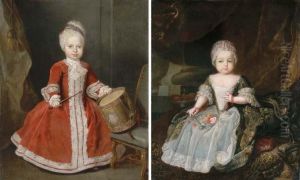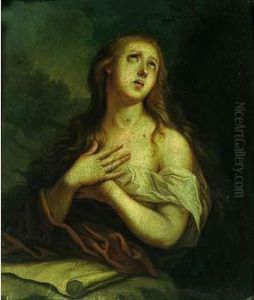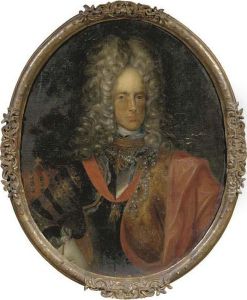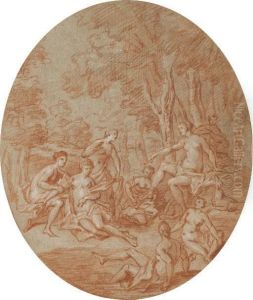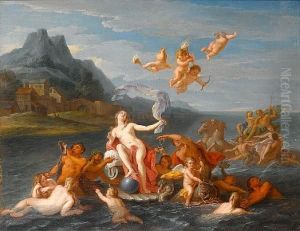Louis Ii Silvestre Paintings
Louis de Silvestre, known also as Louis II Silvestre, was a distinguished French painter who made significant contributions to the art world during the late 17th and early 18th centuries. Born in Paris in 1675, Silvestre was part of a prominent family of artists, which undoubtedly influenced his early inclination towards painting. His father, Israel Silvestre, was a well-known engraver, providing a fertile artistic environment for Louis' development.
Silvestre initially trained under his father and later studied under the tutelage of Charles Le Brun, a leading French painter and art theorist of the time, who played a pivotal role in shaping the formal aesthetic of the French Baroque style. Under Le Brun's guidance, Silvestre honed his skills and developed a penchant for grand historical and mythological compositions, which would become a hallmark of his career.
In 1696, Silvestre moved to Italy, where he spent several years absorbing the rich artistic traditions of the Renaissance and Baroque periods. This experience profoundly influenced his style, infusing his works with a blend of French elegance and Italian grandeur. Upon his return to France, his talent and the connections he had made during his time in Italy helped him gain the patronage of important figures, including members of the French aristocracy and, eventually, the royal family.
Silvestre's career reached new heights when he was appointed as a painter to the king, Louis XIV, and later served under Louis XV. His responsibilities included decorating various royal residences, such as the Palace of Versailles and the Grand Trianon. Silvestre's work during this period was characterized by its dynamic compositions, vibrant color palette, and the skillful depiction of light and shadow, qualities that earned him a reputation as one of the leading painters of his time.
Despite his success in France, Silvestre's talents also caught the attention of the Saxon court, leading to his appointment as the court painter to Augustus II the Strong, Elector of Saxony and King of Poland. In Dresden, he contributed significantly to the artistic landscape, overseeing the decoration of several palaces and mentoring emerging artists. This period was marked by a prolific output of portraits, religious scenes, and allegorical works that reflected his mastery of the Baroque style.
Louis de Silvestre's legacy is not only in the breadth of his work, which includes paintings, frescoes, and drawings, but also in his influence on the subsequent generation of artists. He passed away in 1760, leaving behind a body of work that continues to be celebrated for its artistic merit and historical significance.
